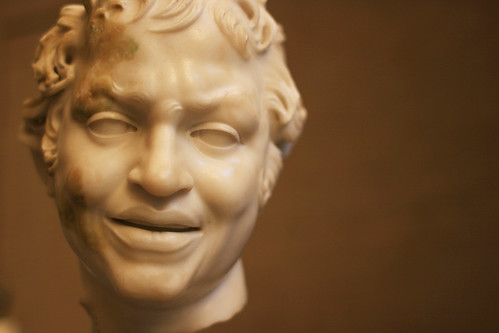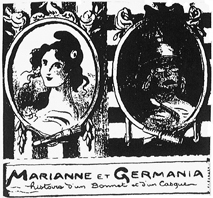Since the beginning, there were also Muurish aboriginals in the area known as Germany today. Those were descendants of archaic or neolithic Africans who had brought the human seed, culture and agriculture, from Africa into Europe via the Levant, Anatolia, and Spain.
Right down to the time of Roman Empire, those tribes of black people otherwise known as Mohrs, or Moors, lived all over the expanse of area now known as Western Europe including Germany.
Those Muurs were called various pseudonyms by later writers including such names as Celts, Picts, Fomorians, Vikings. The key is understanding that many old aboriginal Europeans were Muurish Africans by bloodline and appearance.
In understanding the present ethinc composition of Europe, it is good to bear in mind historical accounts from the times of the Romans reminding us of the invasion of Europe by many nomadic tribes of central Asia. This included the Huns, the Mongols, the Goths, the Suebians, the Angles and Saxons, the Slavs, etc.
The new intruders changed the population demographics of Europe, by the sheer size of their number, and over years and centuries of internecine hostility and bloodshed. In the end, Europe is no different from the conquered land of the black Olmecs, and the Mayans, the black Caribes, the Seminoles, the black Hawaiians and other indigenous peoples who lost their land and heritage, before the onslaught of the central Asian tribes now erroneously known as Europeans.
Below, we present a few pictures of artefacts, dating from 1 B.C.E. to 200 A.D., to illustrate the original population types who by right owned Europe, but especially Germania:
Little Black people of the Rhine Forest, Mainz Germania:
Small black people are well known in German myths and are connected to the treasures of the earth, and the original people. They were recognized as miners, and smiths, workers of iron and mystics. It should be recalled that the Romans, and the Greeks who lived then in Germania also had this custom of venerating dwarfs, possible a nation of African Sans (so-called Pygmies), and followed a certain mystical practice possibly introduced by those little peoples. The God Bes of Egypt which was universally worshipped in the then ancient world, was from such a nation.
Libyan Ammon Ra in a lamp in Augsburg Germany. Ammon Ra is the God of the Ethiopians from where his veneration spread to Egypt unto Libya:
Tiber(ius), Lusitanorum: Tomb stone of an Afro-Roman military elite:

Germania: Muurish-Roman:

Neumagen, Germania: Muurish-Romans:

Relief showing the two mayors of a Roman town in Germania (Stuttgart Lapidarium):
Germanic Warrior. Note his hair:

The Aufanian Mothers (Rheinisches Landesmuseum, Bonn):
Lusitania. Tomb of Muurish-African Roman Elite:
Lusitania
Legionnire Mainz:
This is the tombstone of Gnaeus Musius, standard bearer of the Fourteenth. Musius’ tombstone shows him with the standard (the ‘eagle’). He died at the age of 32 after fifteen service years (CIL 13.6901).
Germanic Warrior on Trajan Column. Note their hair and their faces:

All of the above pictures of ancient Germania region is the reason why the rest of the Europeans secretly make gossips about the Germans with black blood. That is why you heard them call Germans derogatory names like Huns (Huns were black Asian tribes that conquered Europe)during the WWI and WWII. Benjamin Franklin of the American revolution fame confirmed that in German, there was an enduring Muurish root-gene from time immemorial. Mr. Franklin as a result did consider many areas of Germany as black or mixed with the exception of Saxony and Coburg-Gotha areas. This is the reason one will find Cartoons like the one below. Note the colours:

Oguejiofo Annu
Feb. 05 2012
Sources
http://rambambashi.wordpress.com/category/ancient-germany/page/2/

